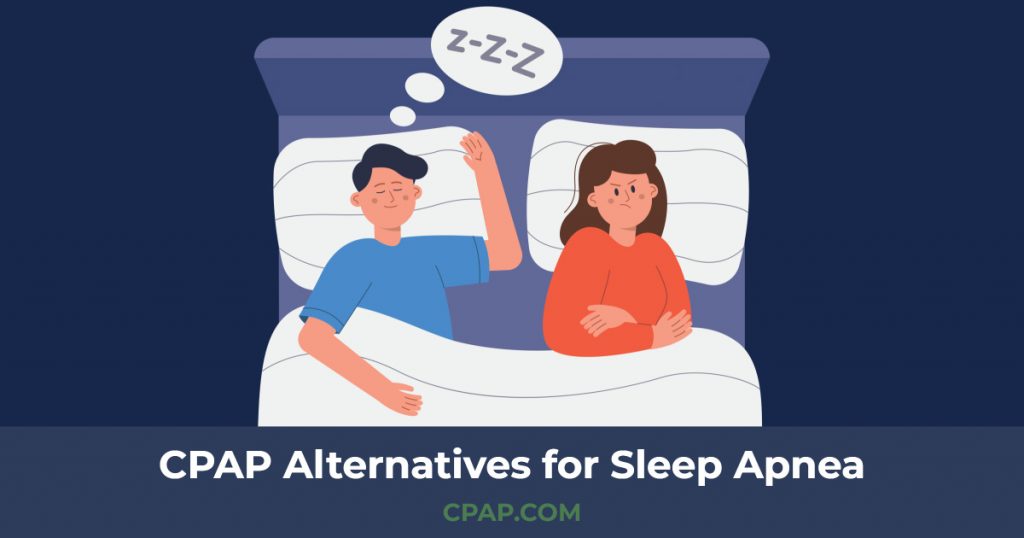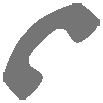
💡 Key Takeaways
- Lifestyle Changes: Weight loss, exercise, and changing your sleeping position can significantly help manage Obstructive Sleep Apnea (OSA) symptoms.
- Smoking and Alcohol: Quitting smoking and avoiding alcohol can improve your overall sleep quality and reduce the severity of OSA.
- Alternative Devices: Expiratory Positive Airway Pressure (EPAP) valves and Oral Pressure Therapy (OPT) are presented as less invasive alternatives to CPAP machines, although they may not be as effective.
- Surgical Interventions: Various surgical options like Upper Airway Stimulation (UAS) and Hypoglossal Nerve Stimulation should only be considered as a last resort for those who cannot tolerate CPAP or BiPAP machines.
- Travel-Friendly Solutions: For those who find traveling with a CPAP machine cumbersome, portable alternatives like sleep apnea mouthpieces and nasal breathing strips may be a good solution.
If you’re having difficulty adjusting to Continuous Positive Airway Pressure (CPAP) treatment and you’ve tried solving some of the most common side effects associated with CPAP therapy, then you may want to discuss the following CPAP alternatives with your healthcare provider:
- EPAP Therapy
- Upper Airway Stimulation
- Sleep Apnea Mouthguards
- Oral Pressure Therapy
- Continuous Negative External Pressure (cNEP)
- Tongue Retaining Devices
- Orofacial Therapy
- BiPAP Machines
- Surgical Interventions
- Lifestyle Changes
Even if you’ve recently been diagnosed with sleep apnea or think you may have it, knowing the alternatives to CPAP will help you make an informed decision for treatment. Our goal is (and always has been) to give you the tools and resources you need to experience a good night’s sleep so that you can wake up feeling alert and energized.
Read on to discover notable alternatives for you to explore with your healthcare provider if you feel that CPAP therapy is not right for you.
Most Common CPAP Alternatives
If, despite your best efforts, you can’t commit to consistently sleeping with your CPAP machine, there are other ways to manage your sleep apnea. While many people have found success with some of the following CPAP alternatives, we strongly urge you to consult with your healthcare provider before making any changes to your sleep apnea therapy.
Expiratory Positive Airway Pressure (EPAP) Valve
EPAP valves are small devices that you attach to your nostrils before going to sleep. The valve uses your breath to create pressure as you exhale, keeping your airway open until your next inhale. Unfortunately, EPAP devices cannot provide pressure during inhalation the way that CPAP machines do, limiting their overall effectiveness.
That said, an extensive 2011 review of nine controlled studies showed that EPAP therapy was associated with significant reductions in apnea events and snoring. Those with mild, moderate, and even severe OSA also reported lower levels of sleepiness the more they used EPAP therapy. While CPAP is still superior in treating OSA, EPAP is a good option for people who cannot tolerate the continuous airflow of a CPAP machine.
New FDA-Approved Upper Airway Stimulation (UAS) device
The new kid on the block in the sleep apnea world is the Upper Airway Stimulation (UAS) device. The UAS device is a surgically-implanted nerve stimulator that is used to stimulate the respiratory muscles responsible for breathing in order to keep your airway open. This is a revolutionary solution for individuals who have moderate to severe obstructive sleep apnea and can’t be treated effectively with PAP therapy. However, this solution is only appropriate for people who have tried to use PAP technology first.
Inspire is currently the most notable UAS device we’re aware of. It can be surgically implanted in a same-day outpatient procedure, and managed at a moment’s notice with the companion remote. In general, those who have tried Inspire saw a reduction of sleep apnea events and report a near-total reduction in snoring frequency and/or volume.
Mouth Guard and Oral Appliances
Some of the least invasive alternatives to a CPAP machine are devices you can wear in your mouth. While many of these are very helpful for snoring prevention, very few people experience full relief of OSA symptoms from a mouth device alone. Some examples of oral appliances for sleep apnea include:
- Mandibular Advancement Device (MAD)
- Tongue Retaining Device
- Tongue Stabilizing Device
- Sleep Apnea Mouthguard
Oral Pressure Therapy (OPT)
Oral Pressure Therapy treats OSA by using negative pressure in the mouth to shift the soft palate and tongue forward. This is done with a machine and a mouthpiece and is typically considered less invasive than CPAP masks.
While initially showing much promise, OPT was demonstrated to not be nearly as successful at treating OSA as CPAP machines in a 2013 multi-center evaluation. While some people are able to get total relief of OSA symptoms by using an OPT device, many only experience partial relief of symptoms with most seeing only a 50% average reduction in apnea events.
Continuous Negative External Pressure (cNEP)
While CPAP machines provide positive pressure inside the airway, cNEP functions by applying negative pressure to the outside of the airway. It works by applying suction to the neck area to open the mid-to-upper airway during sleep.
While cNEP is still relatively new, a 2019 study showed at least a 50% reduction in apnea events in 75% of the test group. The study concluded that, given adequate training and instruction in the use of a cNEP device, cNEP is “well-tolerated” and can provide effective treatment for OSA.
This should be taken with a grain of salt, however, as CPAP therapy has been historically shown to reduce apnea events by 80-95% for those that stick with it.
Tongue Retaining Devices
Tongue Retaining Devices are mouthpieces used to prevent snoring. They can also treat some of the symptoms associated with sleep apnea. The mouthpiece holds your tongue forward and prevents it from falling back into your airway while you sleep.
In terms of effectiveness, a 2017 meta-analysis that looked at 16 studies conducted on tongue retaining devices concluded that “tongue retaining devices provide a statistically effective alternative treatment option for Obstructive Sleep Apnea.” However, it should be noted that the average reduction in apnea events was only 53%, coming nowhere near the effectiveness of CPAP therapy.
Orofacial Therapy
Orofacial therapy is like physical therapy for your mouth. A myofunctional therapist can prescribe you a routine of face and mouth exercises to practice for 6 to 12 months. Orofacial therapy can be used to treat snoring and mild to moderate OSA caused by tongue or tissue relaxation during sleep.
A 2015 meta-analysis looked at nine studies involving myofunctional therapy and found it to be an effective way to reduce apnea events when used alongside CPAP therapy, though not necessarily as a full CPAP alternative.
Other Sleep Apnea Devices
Bilevel Positive Airway Pressure (BiPAP)
BiPAP machines are very similar to CPAP machines, but unlike CPAP, BiPAP uses two distinct pressure settings: one for inhale and one for exhale. Tolerating the continuous pressure of a CPAP machine can be difficult for some people, and having a separate, lower pressure for exhalation makes a difference for them.
A major downside to BiPAP machines is their price. They tend to be more expensive than CPAP machines, and fewer BiPAP machines are covered by insurance. Given your personal data, sleep specialists will recommend either a CPAP machine or a BiPAP machine, and they need to be consulted if you would like to switch machines.
If you have difficulty tolerating continuous pressure, check your CPAP device for an exhalation relief setting. Many modern devices feature this adjustable setting which can help make exhaling against your therapy air much easier.
Adaptive Servo Ventilation (ASV)
This is a newer positive airway pressure (PAP) device to the market. While CPAP machines typically use fixed pressure, ASV machines can respond to your breathing feedback and adjust the air pressure as necessary. This device is similar to BiPAP machines, but it is better at detecting pauses (apneas) and accounting for them with air pressure adjustment.
Since it adapts to your body, some users find an ASV machine to be more comfortable than a CPAP. However, ASV isn’t suitable for those with other pre-existing conditions. Typically ASV is brought in as a last resort if both CPAP and BiPAP machines don’t work and isn’t the type of machine that can simply be purchased or requested.
Sleep Apnea Surgery and Procedures
There are a handful of surgical interventions that can help with Obstructive Sleep Apnea symptoms. These include surgical adjustments to the soft palate, pharyngeal tissue, jaw, and tonsils. Surgery should only be viewed as a last resort for Obstructive Sleep Apnea treatment. Surgery should also not be viewed as a cure-all as many of these surgeries have a wide variety of results that are often less effective than CPAP therapy for sleep apnea treatment.
Many of these procedures have to be performed under general anesthesia, and some of them involve a long and painful recovery. However, surgery can be life-saving for those that cannot be effectively treated with a CPAP machine.
Soft Palate Procedures
The roof of your mouth, called the “soft palate”, can contribute to airway blockage during sleep. Soft palate procedures for sleep apnea are most common in conjunction with a tonsillectomy. The hope is that removing excessive or potentially obstructive tissue will help keep your airway clear while you sleep.
Examples of soft palate procedures include:
- Uvulopalatopharyngoplasty: Removal of the Uvula, Part of the Soft Palate, and Sometimes of the Throat
- Expansion Sphincter Pharyngoplasty: Throat Tissue and Muscle Repositioning
- Lateral Pharyngoplasty: Extensive Repositioning of the Soft Palate Tissue and Sides of the Throat
- The Pillar Procedure: Insertion of Implants That Hold the Airway Open
- Uvulopalatal Flap Surgery: Removal of the Mucosa on the Soft Palate To Make It Shorter Without Removing Any Muscle
- Palatal Advancement Pharyngoplasty: Removal of Some of the Hard Palate (Bone Above Soft Palate)
- Z-Palatoplasty: Moving the Soft Palate Forward
Hypopharyngeal Procedures
Hypopharyngeal or “below-the-pharynx” procedures were developed to provide relief to those who experience Obstructive Sleep Apnea as a result of hypopharyngeal obstruction.
Some of these procedures include:
- Genioglossus Advancement: Moving the Base of the Tongue Forward
- Mortised Genioplasty: Moving the Soft Tissue in the Hypopharyngeal Region Forward
- Tongue Radiofrequency Treatment: Using Radiofrequency Energy To Reduce or Tighten the Tongue
- Midline Glossectomy: Reduction of the Middle and Back of the Tongue
- Hyo-Epiglottoplasty: Removal of Part of the Base of the Tongue and Hyoid Bone Repositioning
- Hyoid Suspension: Stitching the Hyoid Bone to the Thyroid Cartilage
Jaw Advancement Surgery
Maxillomandibular advancement surgery (MMA) can effectively treat Obstructive Sleep Apnea in individuals whose jawbones rest in a suboptimal position during sleep. By moving the jaw forward, nighttime airway obstruction is reduced. This procedure also moves the attached pharyngeal airway muscles forward, and increases pharyngeal soft tissue tension.
Hypoglossal Nerve Stimulation
Another option for treating sleep apnea is hypoglossal nerve stimulation. This involves surgically inserting an implant that stimulates the hypoglossal (tongue) nerve. This can keep the airways open by stimulating and moving the tongue.
A 2013 study featuring a 12-month retrospective found that patients implanted with a hypoglossal nerve stimulator saw a 50% average reduction in apnea events with a significant improvement in quality of life.
Tonsillectomy
Large or swollen tonsils can potentially block your airway, leading to Obstructive Sleep Apnea. Occasionally, a tonsillectomy is an appropriate treatment for sleep apnea relief. However, adult tonsillectomies are becoming less common because the recovery can be long and painful compared to other oral surgery options. Pediatric tonsillectomies, however, are less disruptive procedures. Children with sleep apnea can usually achieve full relief from symptoms with a tonsillectomy.
Apart from medical and surgical interventions, lifestyle changes can also play a significant role in managing sleep apnea.
Lifestyle Changes as a CPAP Alternative
Here are a number of lifestyle changes you can make to help manage your sleep apnea symptoms, regardless of whether you are using CPAP or not:
Exercise and Weight Loss
While it isn’t always the reason for the onset of OSA, there is a relationship between weight gain and sleep apnea. Those who are overweight tend to have fat deposits around the neck that can block the upper airway, making it difficult to breathe while sleeping.
Thankfully, there are some simple and surprisingly effective sleep apnea exercises you can try to improve your breathing and reduce your symptoms.
Some of these exercises include:
- Oropharyngeal Exercises
- Mild Cardio and Stretching Regimens
- Yoga
Targeted Oropharyngeal exercises keep the muscles in your mouth and throat strong and, ideally, reduce the amount of obstruction in the throat.
General exercise is also great for those with OSA; a 2013 meta-analysis of several studies confirmed a statistically significant effect of exercise on sleep apnea symptoms, even for those that weren’t losing a significant amount of weight.
To learn more about these different exercises and to start applying them in your life today, read our sleep apnea exercises guide.
Experiment With Your Sleeping Position
A 2013 meta-analysis reviewed 20 years of sleep apnea research and found that approximately 56% of people with OSA have position-dependent OSA, or POSA. The study also found that using pillows or wearable devices to support side sleeping with positional therapy is an extremely effective and affordable solution for treating POSA.
Simply put, when it comes to reducing sleep apnea symptoms, your sleeping position matters. Sleeping flat on your back is the worst option if you have OSA, as it allows the soft tissue at the back of the throat to easily collapse onto the airway as your muscles relax.
If you’re a back sleeper, switching to sleeping on your side can help reduce sleep apnea symptoms if your OSA is position-dependent. If you have trouble training yourself to sleep on your side, there are devices you can wear to provide vibration feedback whenever you roll onto your back. You can also use pillows behind your back, between your knees, and in front of you to keep you stable and comfortable in a sideways sleeping position.
If you can’t sleep on your side, use a thicker pillow to prop your knees up and a flatter pillow to support your head without tilting it forward. Some back sleepers also report relief from sleeping more upright with a wedge pillow under their back. Specialty pillows can be pricey, but it may be worth investing in some pillows designed to help you sleep more comfortably and with better support around your whole body rather than just your head.
CPAP pillows are also worth mentioning if you’re currently using a CPAP device. These pillows are specifically designed to work in different sleeping positions and have custom cutouts designed to accommodate your mask and tubing.
Quit Smoking
The link between sleep apnea and smoking is complicated because of the different ways that smoking interacts with each type of sleep apnea. We’ll just focus on smoking and OSA for the purposes of this article.
A comprehensive 2014 study showed that cigarette smoking increases the severity of OSA by disrupting your natural sleep rhythym, inflaming the upper airway, reducing your ability to wake up naturally, and constricting the the muscles of the respiratory system.
A study from 2019 also concluded that smokers with OSA experienced more apnea events, lower blood-oxygen levels, and higher levels of daytime sleepiness than non-smokers with OSA.
While smoking cessation won’t inherently ‘cure’ your OSA, it will improve your overall sleep quality and should reduce the overall number of your apnea events.
Avoid Alcohol
Whether you notice it or not, alcohol actually disrupts your sleep. Drinking alcohol before bed can prevent your brain from entering deep Rapid Eye Movement (REM) sleep. Nighttime alcohol may also increase the likelihood that the tissues in your mouth and throat will relax during sleep, possibly blocking your airway.
A 2018 meta-analysis of 14 studies associated alcohol consumption with longer AND more frequent apnea events, as well as significantly lower blood-oxygen levels. This comprehensive study confirms that alcohol puts you at risk for both developing OSA and worsening existing OSA. Cutting alcohol out or greatly minimizing your intake should see an improvement in your OSA symptoms.
Alternatives to CPAP when Traveling
Maybe you’ve adjusted to wearing your CPAP machine at home, but when it comes to traveling you’re at a loss for what to do. Anyone who has tried to travel with their CPAP machine will tell you it’s a hassle.
Fortunately, there are CPAP machines designed specifically for travel use that are more compact, and easy to take through security. But if you don’t travel enough to purchase a separate CPAP machine, there are a handful of alternatives for managing your sleep apnea while away from home. For instance, you could try:
- Sleep Apnea Mouthpieces
- Sleeping on Your Side or Propping Your Head Up With Extra Pillows
- Packing a Travel Humidifier To Increase the Air Moisture
- Nasal Breathing Strips
- EPAP Valves
Is CPAP the Only Treatment for Sleep Apnea?
CPAP therapy is still considered the most effective treatment for Obstructive Sleep Apnea (OSA) and many experience life-changing benefits from continued use of a CPAP. But maintaining CPAP compliance can be hard for some people due to difficulty tolerating the continuous air flow or from a range of other problems, including:
- Mask Leaks
- Nasal Dryness
- Claustrophobia
- Dry Mouth
Fortunately, there are many solutions to these common CPAP problems. Regardless of your choice of therapy, treating your sleep apnea can have a major improvement on your quality of life and reduce your chances of serious health issues such as heart disease and diabetes.
CPAP Alternatives for Mouth Breathers
There are fewer CPAP alternatives for mouth breathers compared to nose breathers, but if you’re struggling with CPAP compliance, here are a few helpful alternatives:
- Try Using a Nasal Decongestant or Antihistamine Before Bed
- Try Sleeping on Your Side or Propping Your Head Up With a Pillow To Sleep on an Incline
- Consider Surgical Interventions for Treating Sleep Apnea
Final Thoughts
While the CPAP machine is the gold standard for the treatment of Obstructive Sleep Apnea, there are many challenges people face during CPAP therapy that can discourage or even physically prevent them from being treated with CPAP.
If you’re struggling to stick with your CPAP, there are targeted oropharyngeal exercises, different sleeping positions, and minor lifestyle adjustments you can try alongside your CPAP therapy for a more complete approach to treating your OSA.
There are also a variety of CPAP alternatives available to individuals who can’t use CPAP machines, including BiPAP or ASV machines, oral devices, and surgical interventions. Managing your OSA is extremely important to your health, and finding a treatment option that you’re comfortable with can help improve your quality of life.



